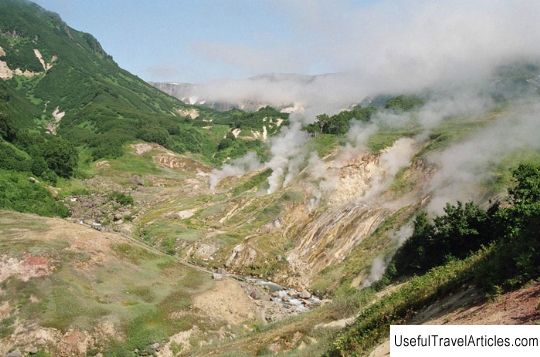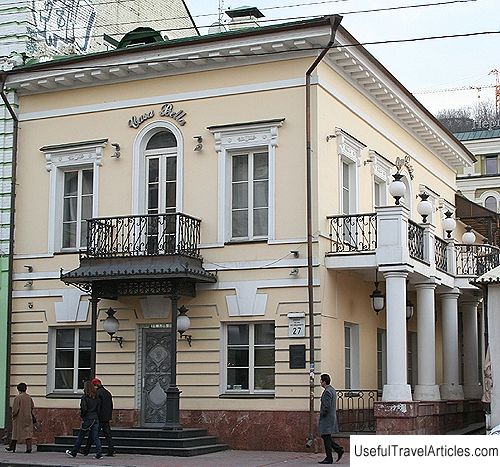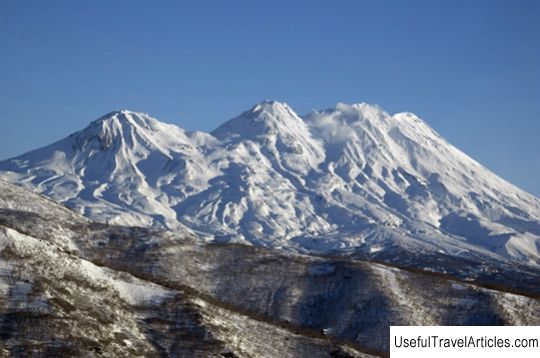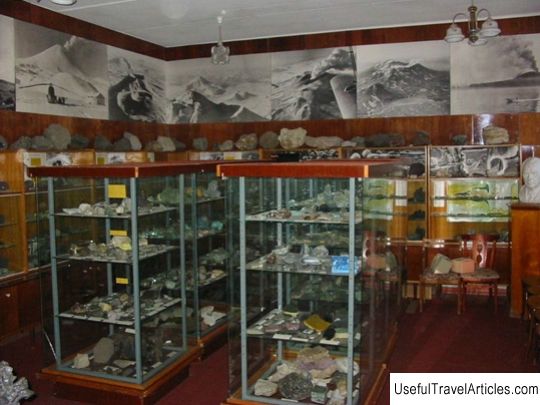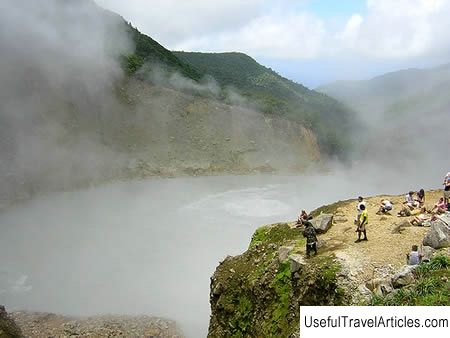Valley of Geysers description and photos - Russia - Far East: Kamchatka
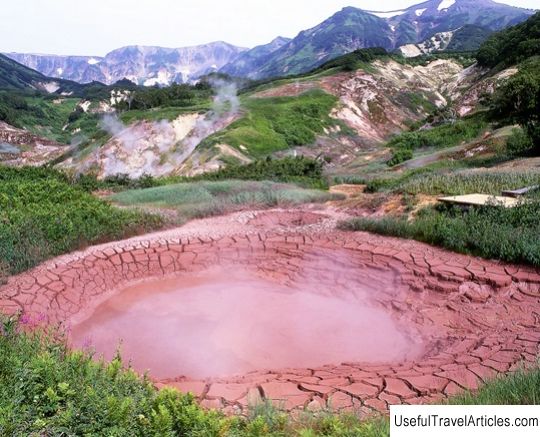
Valley of Geysers description and photos - Russia - Far East: Kamchatka. Detailed information about the attraction. Description, photographs and a map showing the nearest significant objects. The name in English is Valley of Geysers. Photo and descriptionThe Valley of Geysers is the pearl of Kamchatka, one of the wonders not only of Russia, but also of the world. The valley is located in the Kronotsky Nature Reserve, in the basin of one of the tributaries of the Shumnaya River, among the mountains of the Eastern Volcanic Belt. In the bowl of an ancient lake that disappeared many centuries ago, fountains and jets of boiling water burst out from the hot bowels of the earth. Spring comes to the valley a month earlier than usual, and then everything around comes alive and flourishes. Many species of plants, animals, birds, some species of which live only here - all this is the unique ecosystem of the Valley of Geysers. The landscape of the valley in late autumn and early winter is peculiar - snow falling from the sky, and steam and boiling water escaping from the depths of the earth. It is recommended to visit the Valley of Geysers in the summer-autumn period. where a tourist can fearlessly make a break and rest, admiring the enchanting spectacle around. Tourists are taken to the Valley by helicopter. During the flight, the helicopter will circle over the Karymsky volcano, spitting out ash clouds, and will fly around the Maly Semyachik volcano with a turquoise acid lake in the crater. Spring comes to the valley a month earlier than usual, and then everything around comes alive and flourishes. Many species of plants, animals, birds, some species of which live only here - all this is the unique ecosystem of the Valley of Geysers. The landscape of the valley in late autumn and early winter is peculiar - snow falling from the sky, and steam and boiling water escaping from the depths of the earth. It is recommended to visit the Valley of Geysers during the summer-autumn period. Tourists are taken to the Valley by helicopter. During the flight, the helicopter will circle over the Karymsky volcano, spitting out ash clouds, and will fly around the Maly Semyachik volcano with a turquoise acid lake in the crater. Spring comes to the valley a month earlier than usual, and then everything around comes alive and flourishes. Many species of plants, animals, birds, some species of which live only here - all this is the unique ecosystem of the Valley of Geysers. The landscape of the valley in late autumn and early winter is peculiar - snow falling from the sky, and steam and boiling water escaping from the depths of the earth. It is recommended to visit the Valley of Geysers in the summer-autumn period. Tourists are taken to the Valley by helicopter. During the flight, the helicopter will circle over the Karymsky volcano, spitting out ash clouds, and will fly around the Maly Semyachik volcano with a turquoise acid lake in the crater. Spring comes to the valley a month earlier than usual, and then everything around comes alive and flourishes. Many species of plants, animals, birds, some species of which live only here - all this is the unique ecosystem of the Valley of Geysers. The landscape of the valley in late autumn and early winter is peculiar - snow falling from the sky, and steam and boiling water escaping from the depths of the earth. It is recommended to visit the Valley of Geysers in the summer-autumn period. Spring comes to the valley a month earlier than usual, and then everything around comes alive and blossoms. Many species of plants, animals, birds, some species of which live only here - all this is the unique ecosystem of the Valley of Geysers. The landscape of the valley in late autumn and early winter is peculiar - snow falling from the sky, and steam and boiling water escaping from the depths of the earth. It is recommended to visit the Valley of Geysers during the summer-autumn period. Spring comes to the valley a month earlier than usual, and then everything around comes alive and blossoms. Many species of plants, animals, birds, some species of which live only here - all this is the unique ecosystem of the Valley of Geysers. The landscape of the valley in late autumn and early winter is peculiar - snow falling from the sky, and steam and boiling water escaping from the depths of the earth. It is recommended to visit the Valley of Geysers in the summer-autumn period.             We also recommend reading Stopera description and photos - Netherlands: Amsterdam Topic: Valley of Geysers description and photos - Russia - Far East: Kamchatka. |
